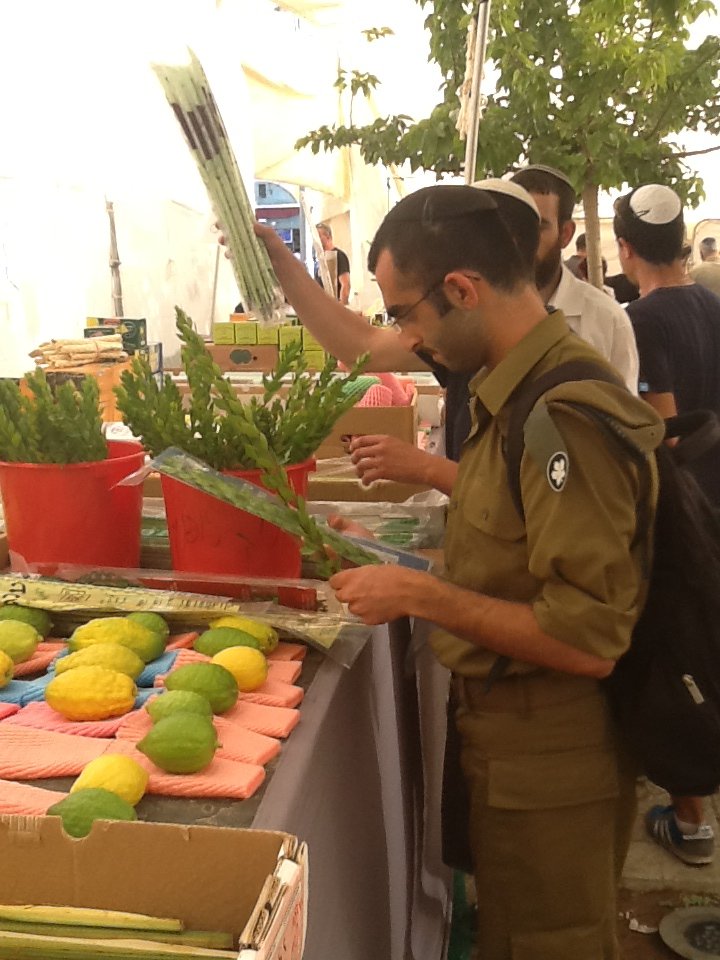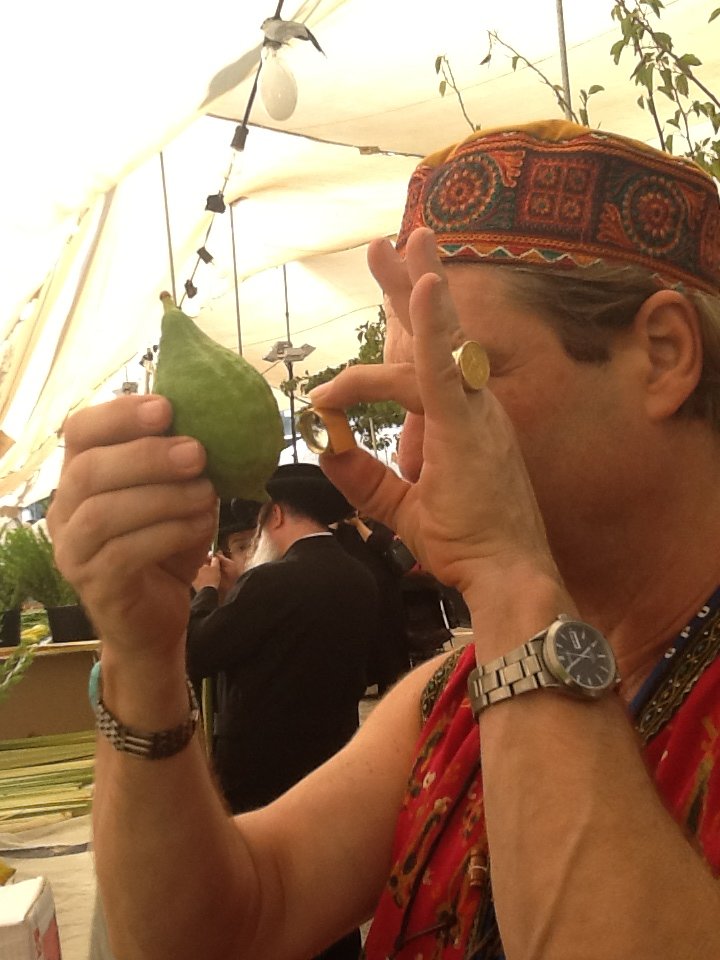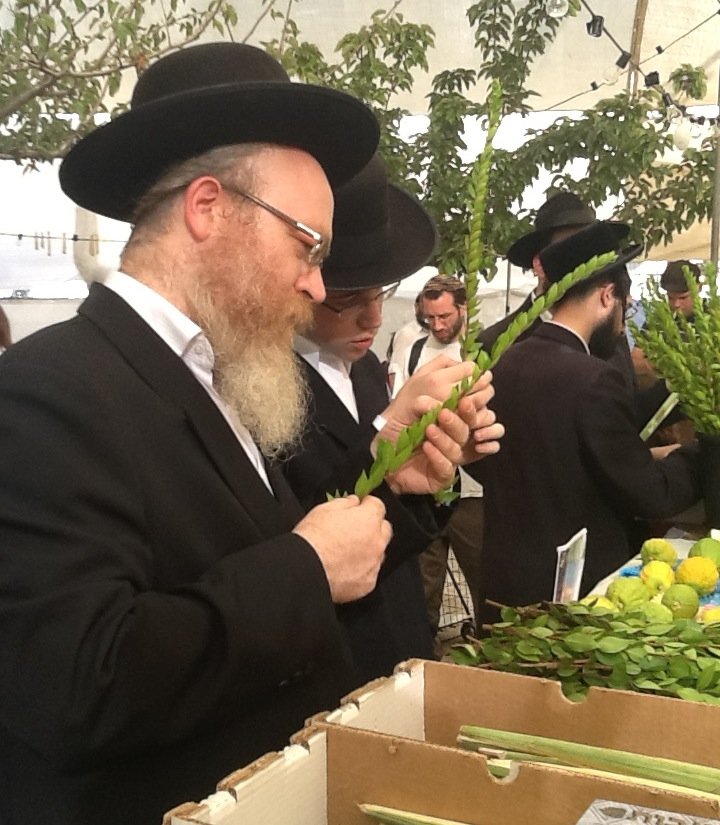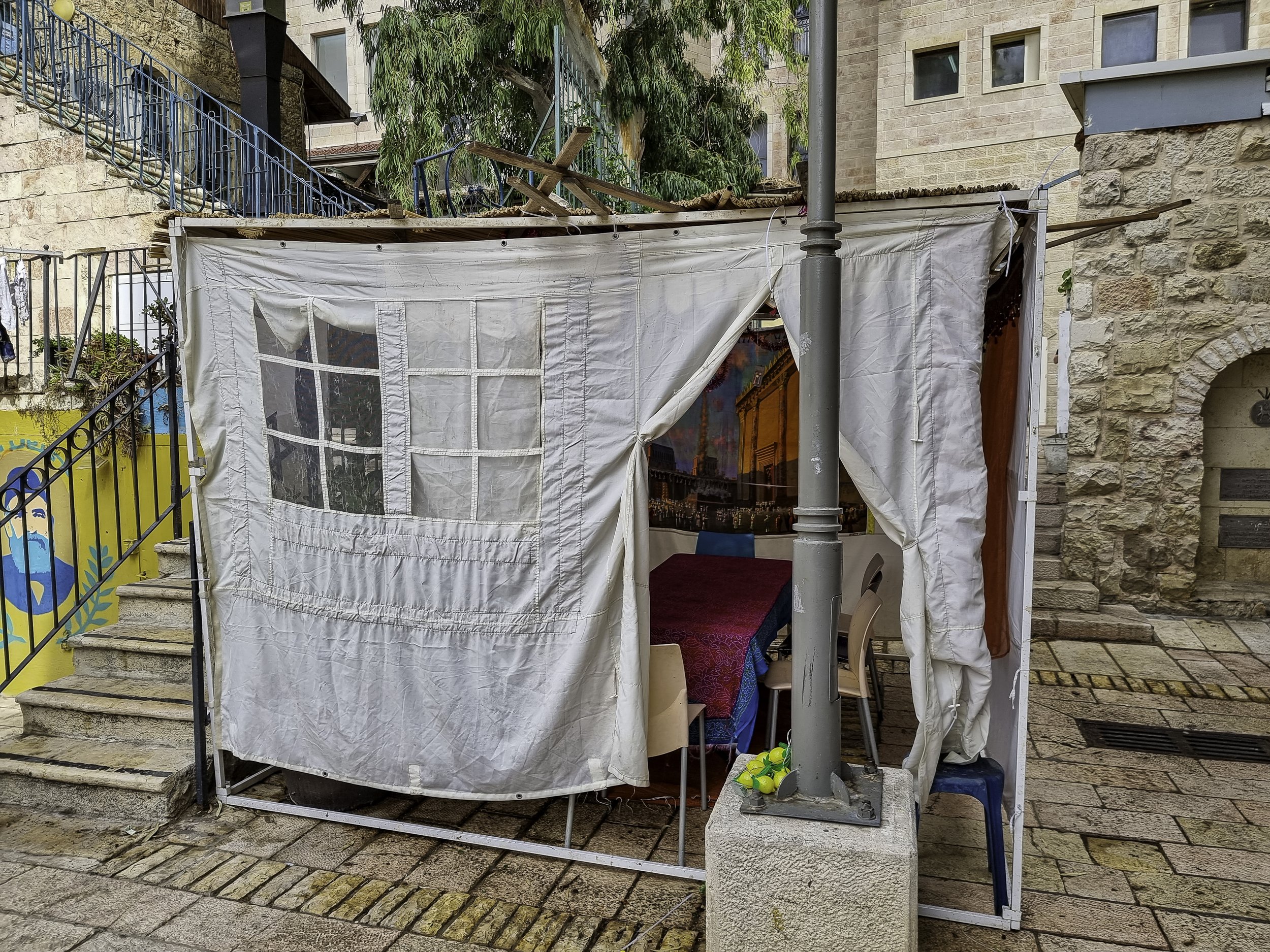Inside Jerusalem’s Etrog Market In Preparation For Sukkot
Vendors in Jerusalem selling etrogs in time for the Jewish holiday of Sukkot. (Photos by Gil Zohar)
(ESSAY) “You’re asking $55 for a lemon? You must be crazy!”
That was my visceral reaction when in 1995, for the first time in my 40 years, I went shopping in Jerusalem for an etrog and a lulav — a womb-shaped citron and a phallic palm branch tied together with two willow and three myrtle twigs.
The package is ceremoniously waved in six directions during Judaism’s week-long holiday of Sukkot, which begins this year with the full moon on Thursday. The act offers a host of magical meanings. It symbolizes God’s dominion throughout the universe, fertility and a host of other interpretations.
READ: ‘You’re So Not Invited To My Bat Mitzvah’ Strong On Faith, Weak On Enjoyability
Sukkot comes five days after Yom Kippur and celebrates the gathering of the harvest and commemorates the protection God gave the Jewish people when they left Egypt.
The etrog merchant — a teenage yeshiva student whose father ran the Orthodox synagogue-turned-florist shop in a Bathurst Street suburban strip mall in Toronto — clarified his sales pitch.
The etrog, he said, was “free.”
But the lulav and twigs, on the other hand, would cost money. I could only get the gratis part by purchasing the other half. He wouldn’t lower his price — even if I waited until just before the festival started that evening before sundown. Unsold sets would be returned to his distributor, he explained, protecting the etrog cartel’s pricing system.
To heck with that, I thought. There’s was no way I’d be forking out that kind of dough for some obscure yellow fruit that only grows in a few citrus groves in Israel and a handful of other locales across the Mediterranean.
“Schar mitzvah, mitzvah,” I reminded myself — the remuneration of one divinely ordained commandment is fulfilling another. Where is it written that the price is $55?
Reading my mind and anxious that I fulfill the mitzvah (a good deed), the pimple-faced vendor counseled me to try the competition across the street. There, like wild flowers in the Galilee after a winter rain, a pop-up Sukkot boutique had sprung up offering everything from prefabricated sukkah kits — a kind of hut — to flashing Christmas light-like decorations and laminated posters of rabbinic superstars.
The proprietor was a charming Moroccan gentleman whose visage looked like it could have graced one of the posters. Though his English was nonexistent and his Hebrew was worse, he managed to convey that the fruit from the sun-blessed land of King Mohammed VI was a mere $45.
Relenting, I thought for a crummy $10 I could be a vicarious Zionist. It was a decision analogous to my customary purchase of Israeli wine for the family gatherings at Rosh Hashana and Passover. Call it oenophile lip service.




Growing up in an assimilated Jewish home, I was ignorant of the most fundamental observances of Judaism’s holy days, I didn’t even know what an etrog was. It takes considerable learning to appreciate the holy fruit is a fair value at $55. I’ve been engaging in that self-education, one mitzvah at a time, for a few decades.
My earliest memory of Sukkot (I dislike the goofy and goyish translations of tabernacles or booths) was at our neighbourhood synagogue where, on a dare, I downed 13 paper cups of sickly sweet Manischewitz wine. Returning home with my head exploding, I vomited, then slept the rest of the day.
Living in Israel in the 1980s, I became better acquainted with the joy-filled holiday. There millions of apartment dwellers become instant carpenters, fashioning a bewildering array of Sukkot shelters on their balconies, lawns and even sidewalks.
It goes without saying that Orthodox Jews universally observe the holiday. Apartments in religious neighborhoods are designed with balconies offering an unobstructed view of the sky, in accordance with Jewish ritual law.
What surprised me is how widespread the celebration of the festive holiday is among Israel’s so-called secular majority. The festive holiday — which recalls both the temporary dwellings of the nomadic Israelites as they wandered in the Sinai Desert for 40 years and the harvest huts in which Jews’ agricultural ancestors once lodged — is also called “z’man simhateinu” (the season of our rejoicing).
Israelis use Sukkot as an opportunity for entertaining and traveling — a counterpoint to the spiritual solemnity of Rosh Hashana and Yom Kippur. In fact, the country grinds to halt for a week. Schools close, and many businesses are open only half days. It’s comparable to the United States during the week between Christmas and New Year’s Day. Coca-Cola even runs ads across Israel showing people drinking the real thing al fresco in their sukkah.
My initial attempt at constructing a sukkah involved lashing the brooms and mops of our Jerusalem apartment to the balcony, wrapping this frame with bed sheets, then covering the opening with “skhakh” (thatching) from the bushes in the garden. While the shaky — and not entirely satisfactory — structure reflected the impermanence of our frail lives, it also brought home that one only reaps what one has sown.
Returning to Canada in 1986, I called a plumbing supply store with a Gentile-sounding name I found in the phone book. After describing at some length a contraption of pipes that would assemble together, the non-Jewish clerk cut me short and exclaimed, “Oh, you mean a sukkah. Why didn’t you just say so?”
As my sukkah has grown, so too has my observance of the mitzvah of “ushpizin,” an Aramaic word meaning symbolic guests related to the English word “hospitality.” According to the Kabbala, Abraham, Isaac, Jacob, Joseph, Moses, Aaron and David are invited — one each day.
Typically, Israelis invite friends and neighbors for meals and desserts. Last year, we had more than 100 guests — Jewish, Christian and Muslim — at an elaborate open sukkah celebration featuring barbecue.
Gil Zohar was born in Toronto, Canada and moved to Jerusalem, Israel in 1982. He is a journalist writing for The Jerusalem Post, Segula magazine, and other publications. He’s also a professional tour guide who likes to weave together the Holy Land’s multiple narratives.

